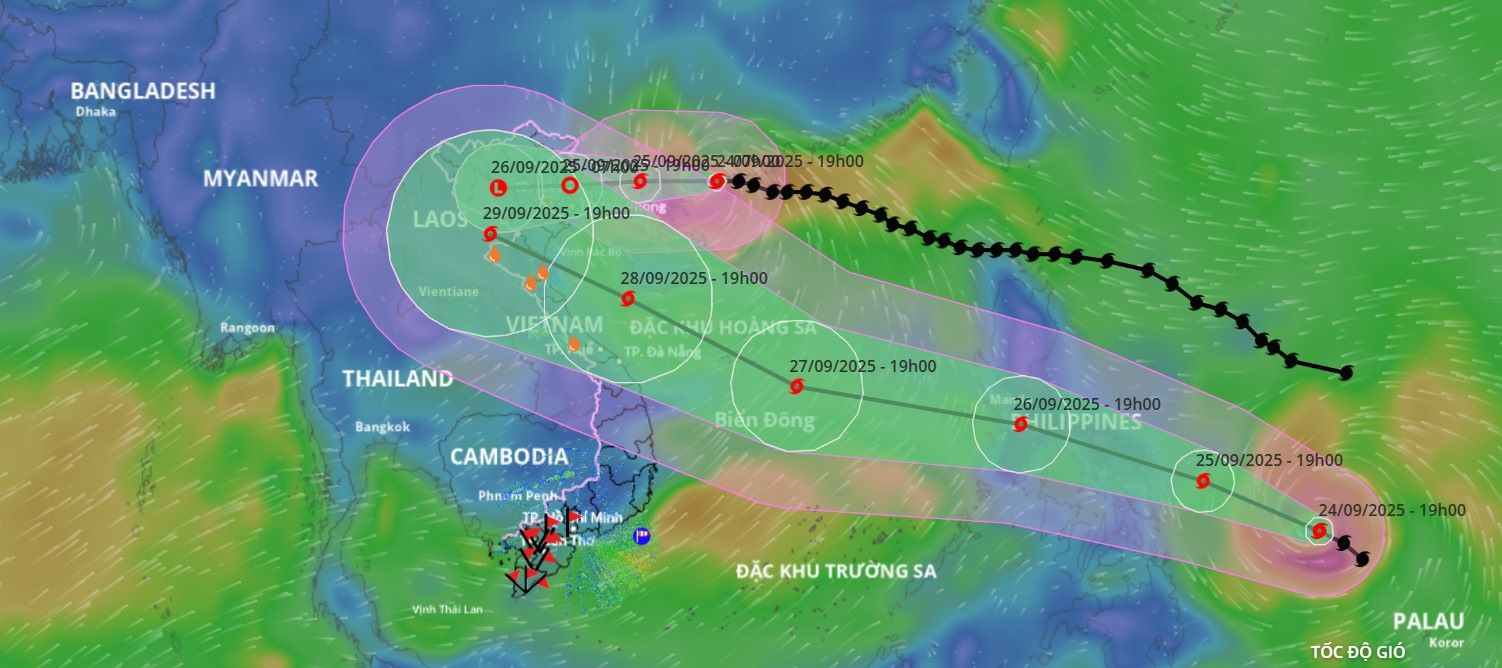According to the latest storm news from the National Center for Hydro-Meteorological Forecasting, at 10:00 p.m. on September 24, storm No. 9 Ragasa was at about 21.6 degrees North latitude; 110.7 degrees East longitude, about 300km east of Mong Cai (Quang Ninh).
The strongest wind speed reaches level 12 (118 - 133km/h), gusting to level 15.
It is forecasted that in the next 3 hours, the storm will move westward, at a speed of about 20km/h.

At 7:00 a.m. on September 25, the storm was at about 21.6 degrees North latitude; 108.9 degrees East longitude, about 100km east of Mong Cai (Quang Ninh). The wind level dropped to level 8-9, gusting to level 11, the storm continued to move west, at a speed of about 20km/h.
At 7:00 p.m. on September 25, the storm was at about 21.5 degrees North latitude; 106.6 degrees East longitude, located on the mainland of the Northeastern provinces of the North. The wind level dropped to level 6, gusting to level 8.
By 7:00 a.m. on September 26, storm No. 9 Ragasa weakened into a low pressure area over the mainland in the Northwest of the North with winds below level 6.
The center forecasts that from tonight to September 26, in the Northern region, Thanh Hoa and Nghe An, there will be heavy to very heavy rain, with common rainfall of 100-250mm, locally over 350mm.
In addition, in the afternoon and evening of September 25, the Central and Southern highlands will have scattered showers and thunderstorms with rainfall of 15-30mm, locally heavy rain over 70mm.
During thunderstorms, there is a possibility of tornadoes, lightning, hail and strong gusts of wind.
In urban areas and industrial parks, heavy rain is likely to cause flooding in low-lying areas. At the same time, the National Center for Hydro-Meteorological Forecasting forecasts flash floods on small rivers and streams, landslides on steep slopes.
Faced with the above situation, Chairman of the Hanoi People's Committee Tran Sy Thanh signed and issued Official Dispatch No. 14/CD-UBND, advising people to limit going out.
The dispatch requires directors of departments, branches, sectors and chairmen of People's Committees of wards and communes to proactively respond to storms, flash floods, landslides and inundation; regularly monitor and update the situation to promptly deploy plans and ensure the safety of people's lives.
The grassroots government is assigned to review and prepare plans for evacuation and relocation of residents when necessary; mobilize forces to be on duty, rescue and relief; protect houses, infrastructure works, schools, hospitals, dyke systems, dams and agricultural production.
In addition, wards and communes need to organize forces to control travel, traffic flow, limit people from going out during the storm; at the same time, prepare vehicles and materials to promptly fix the problem, ensuring smooth traffic when heavy rain occurs.
For tourists planning to visit the Northern and North Central provinces during the time of Ragasa's landfall, they should proactively monitor weather forecasts, consider adjusting their schedules, and limit travel during rainy and stormy days to ensure safety.






